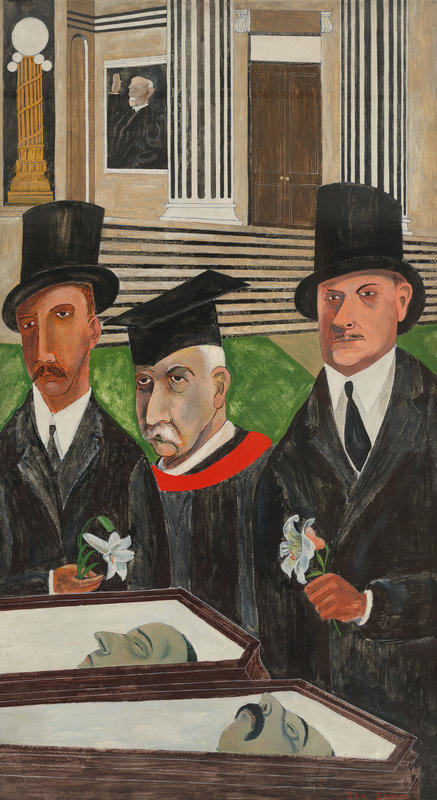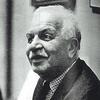More about The Passion of Sacco and Vanzetti

Contributor
Racial profiling was alive and well in the 1920s.
The “red scare” was at its peak, and Italian immigrants were among those treated as second-class citizens in America. Ben Shahn was one of many activists who took notice of the unjust treatment of two victims of ethnic prejudice within the judicial system -- Nicola Sacco and Bartolomeo Vanzetti.
Sacco and Vanzetti (who should be memorialized for his incredible, lustrous mustache alone), were charged with the murder of two men in an armed robbery at a Braintree, Massachusetts factory. Both were Italian immigrants who embraced anarchism and radical communism full-tilt after arriving to the US only to live in working class squalor. Plus, they dodged the WWI draft and took part in numerous labor strikes. So, they were not Uncle Sam’s favorite people, and landed on a government watchlist for suspicious dudes.
The two men were convicted of the murders on very shady evidence -- no fingerprints found at the crime scene matched theirs, and it later became clear that witnesses at their trial were coerced into giving false testimonies. The whole thing smelled fishy to Ben Shahn, and he was not alone in his disdain for the racist shortcomings of the judicial system. Workers the world over watched the Sacco and Vanzetti trial closely, and formed something of a movement in support of the accused. But alas, as you can probably tell from Shahn’s painting, Sacco and Vanzetti were executed in 1927, after seven years of legal proceedings.
As the young son of radical Lithuanian socialists, Shahn would zealously (and maybe dangerously) shout “Down with the czar!” at anyone in a uniform. Always destined to be an outspoken champion of justice, it’s no wonder that so much of his art is imbued with a strong leftist voice.
“Ever since I could remember I’d wished that I’d been lucky enough to be alive at a great time—when something big was going on, like the Crucifixion,” Shahn said of his fascination with the Sacco and Vanzetti case. “And suddenly realized I was! Here I was living through another crucifixion. Here was something to paint!”
The dead guys in Shahn’s homage are obviously Sacco and Vanzetti, but who is everyone else? The portrait on the wall behind them is Webster Thayer, who judged the trial and who was widely known as a bigoted creep. The uncomfortable-looking trio standing over the deceased are members of the committee that reviewed their convictions: Samuel Stratton, Lawrence Lowell, and Robert Grant (presidents of MIT and Harvard, and a retired judge, respectively). Visibly more guilty than the accused, the awkward sentencers imply the martyrdom of the innocent Sacco and Vanzetti.
Sources
- Cashman, Sean Dennis. America in the Twenties and Thirties: The Olympian Age of Franklin Delano Roosevelt. New York: New York University Press, 1989.
- Kuykendall, Lara. Shahn, The Passion of Sacco and Vanzetti. Accessed 1/22/17. https://www.khanacademy.org/humanities/art-1010/art-between-wars/americ…
- McGirr, Lisa. “The Passion of Sacco and Vanzetti.” The Journal of American History Vol. 93, No. 4 (Mar., 2007), pp. 1085-1115











